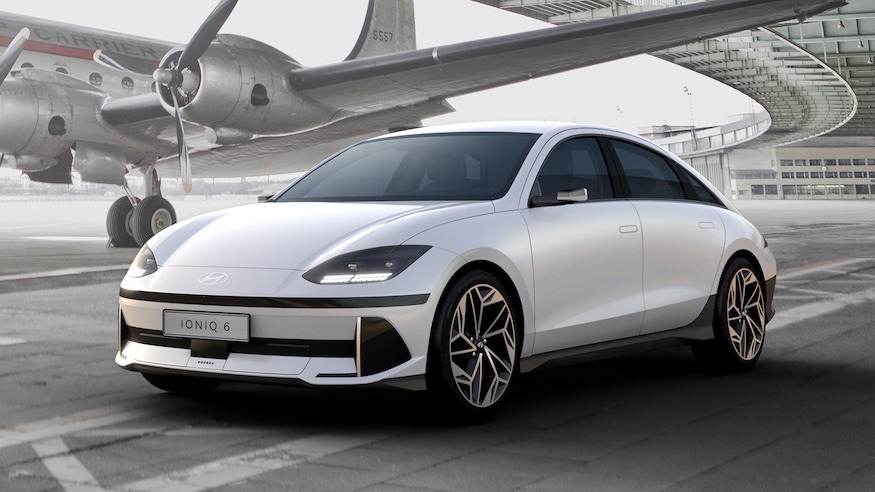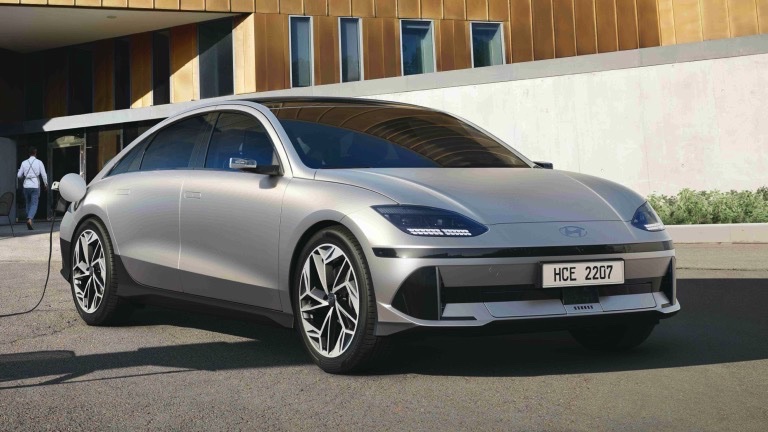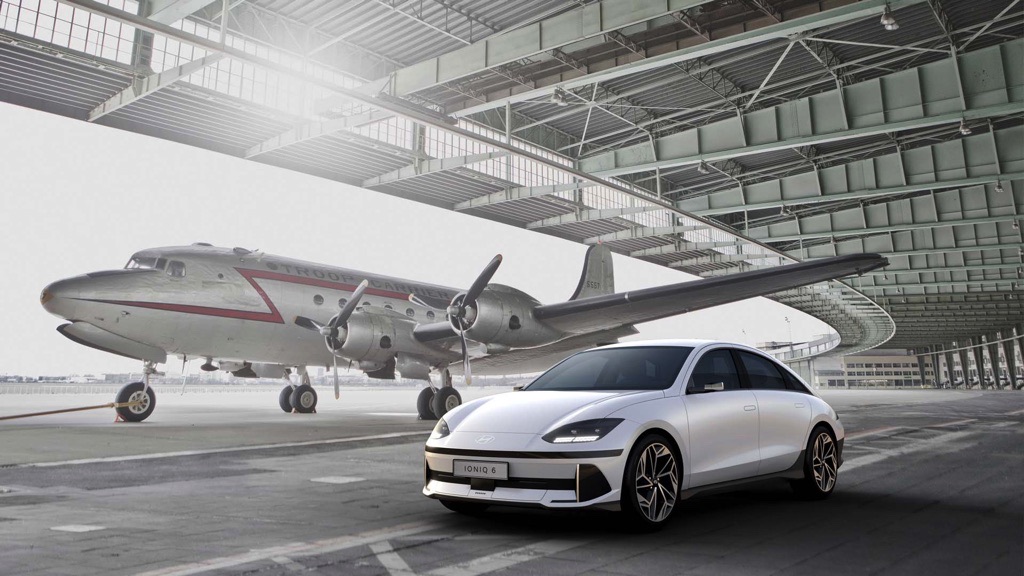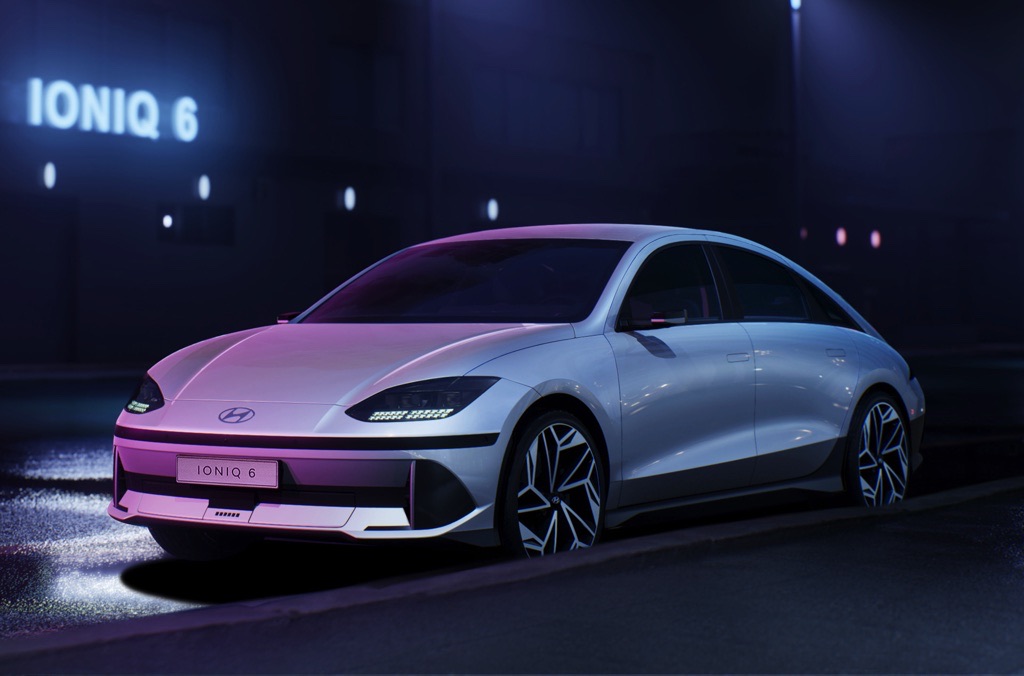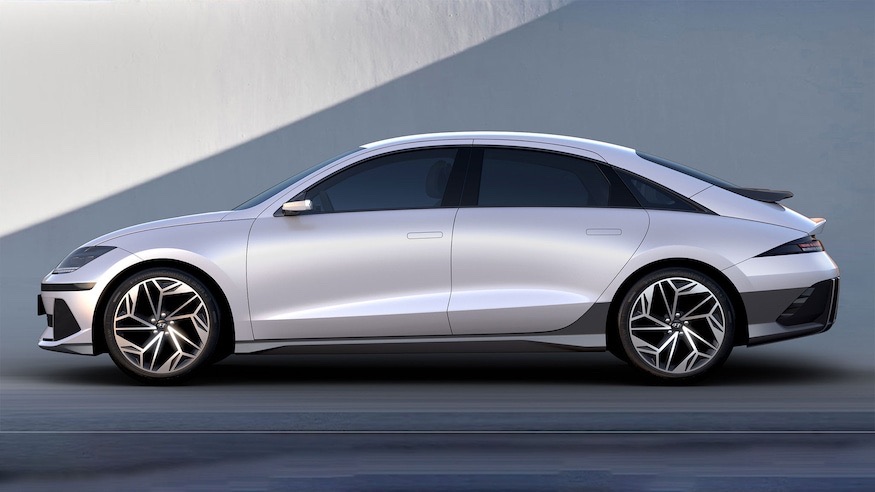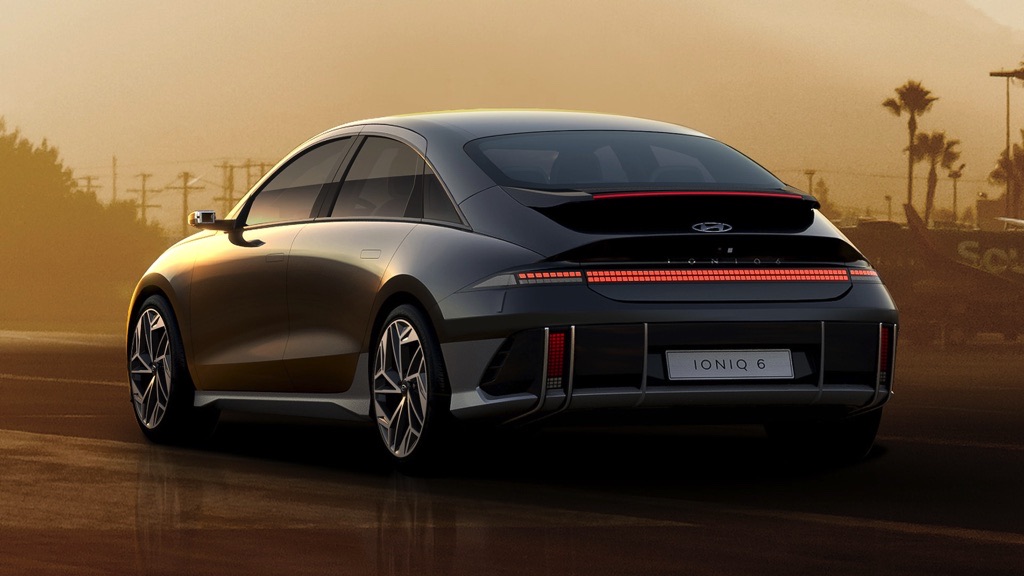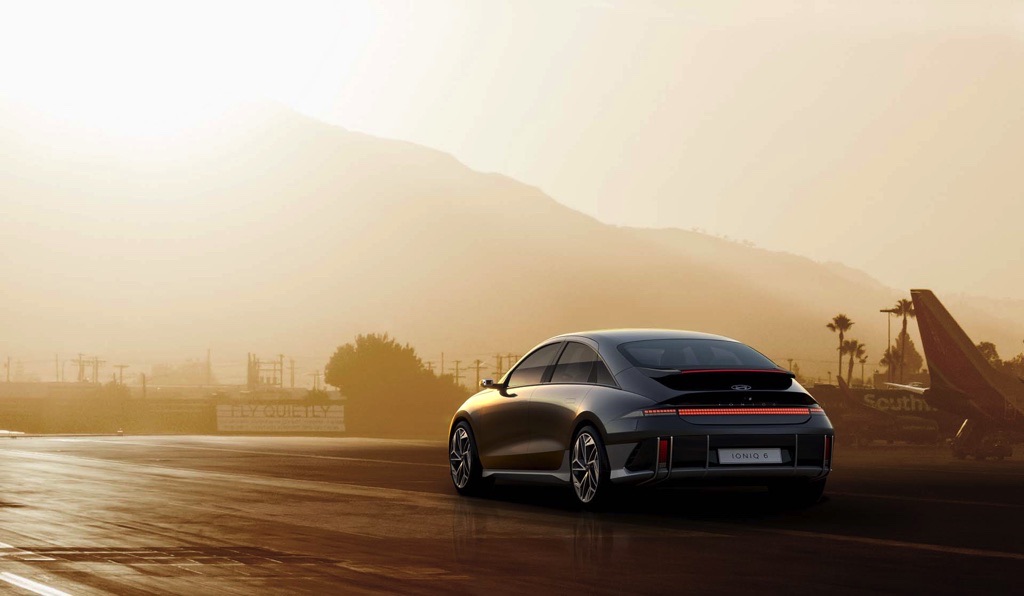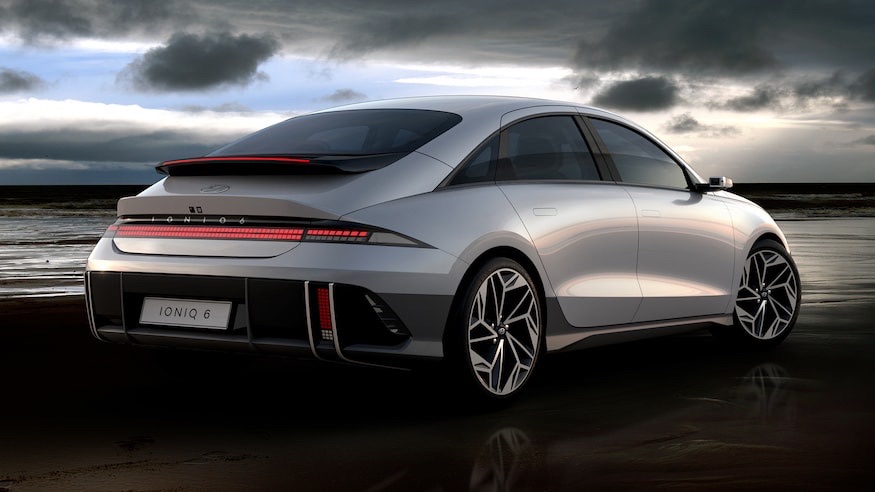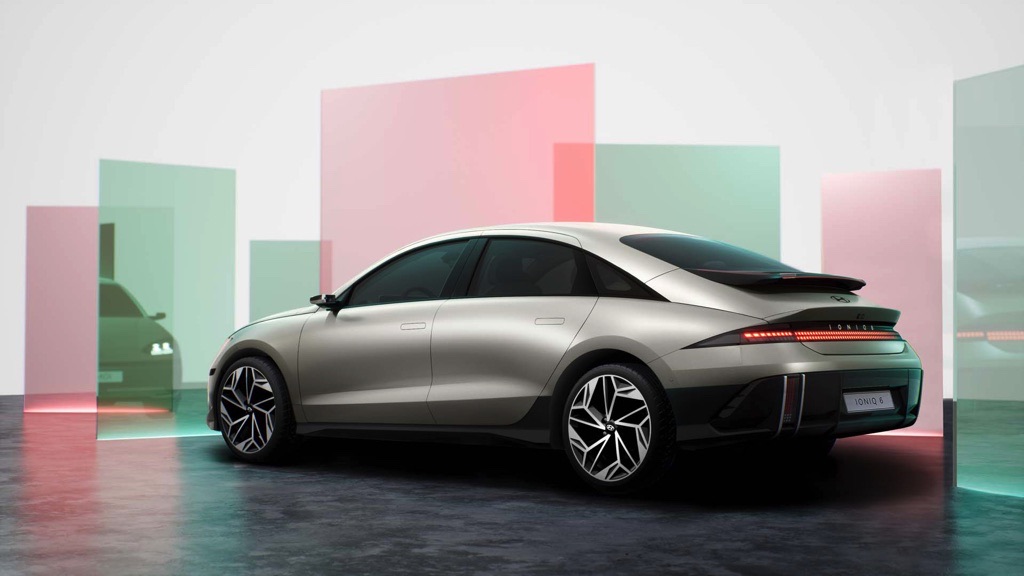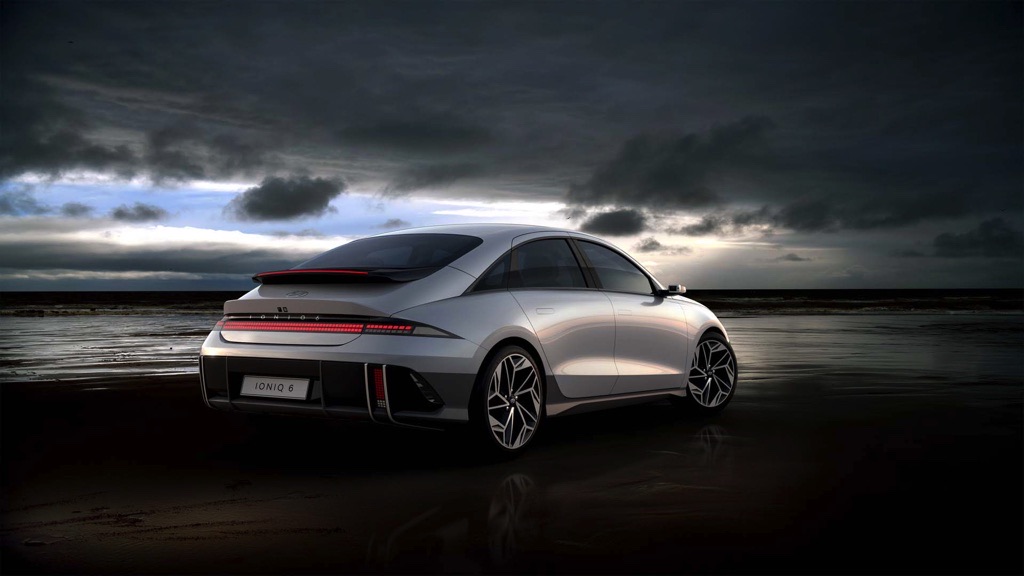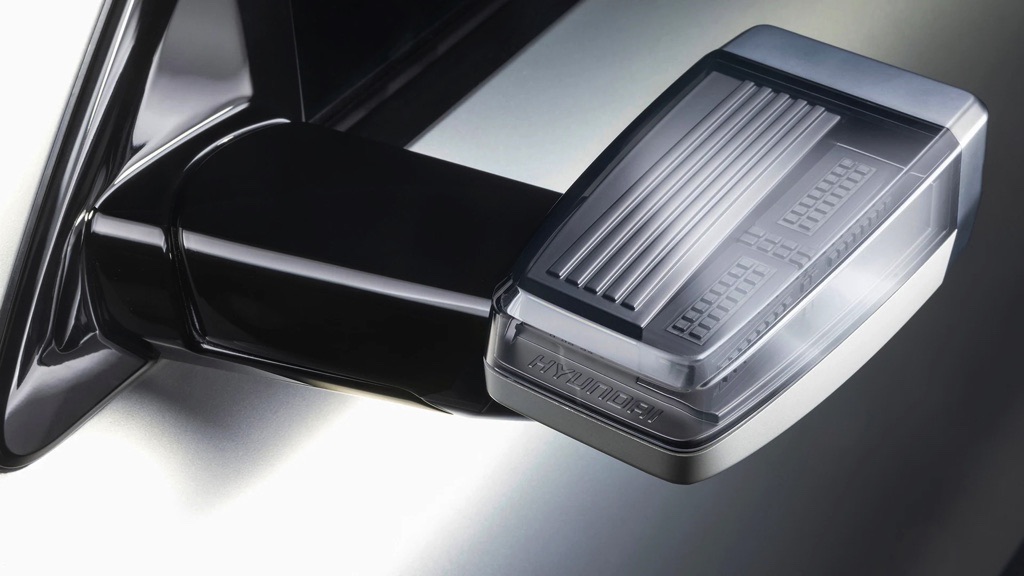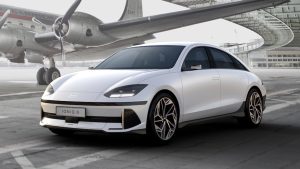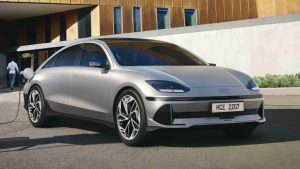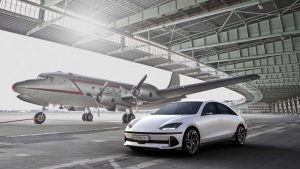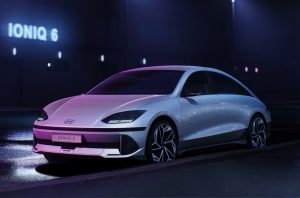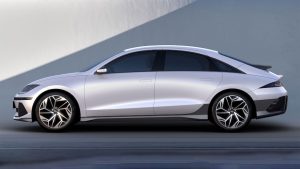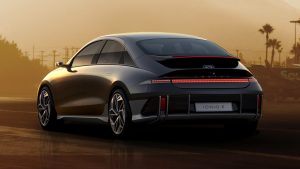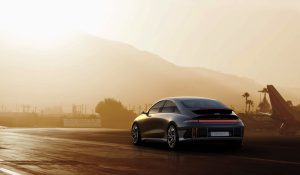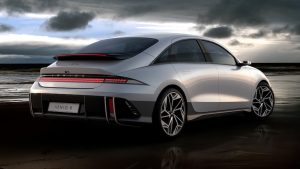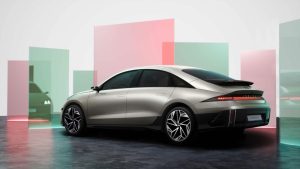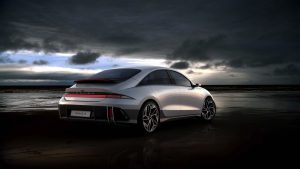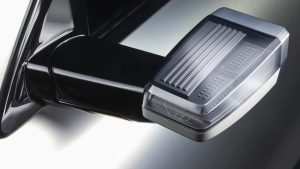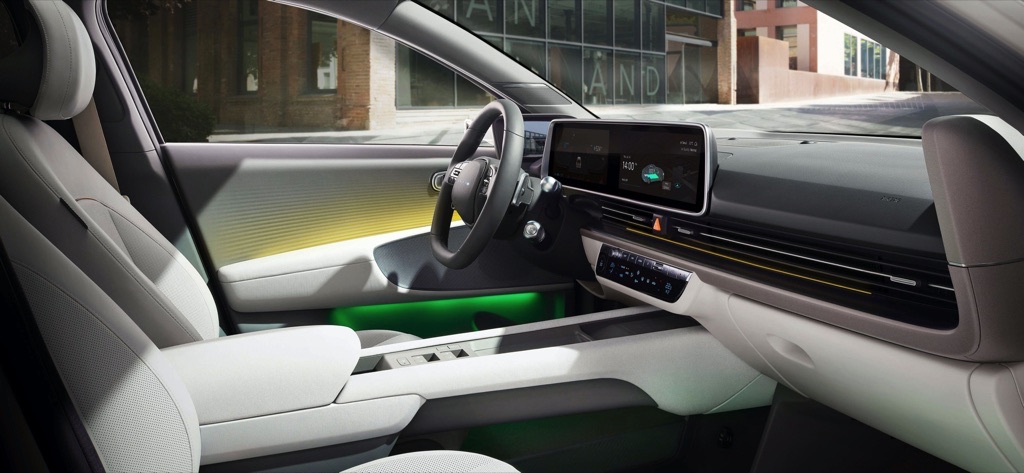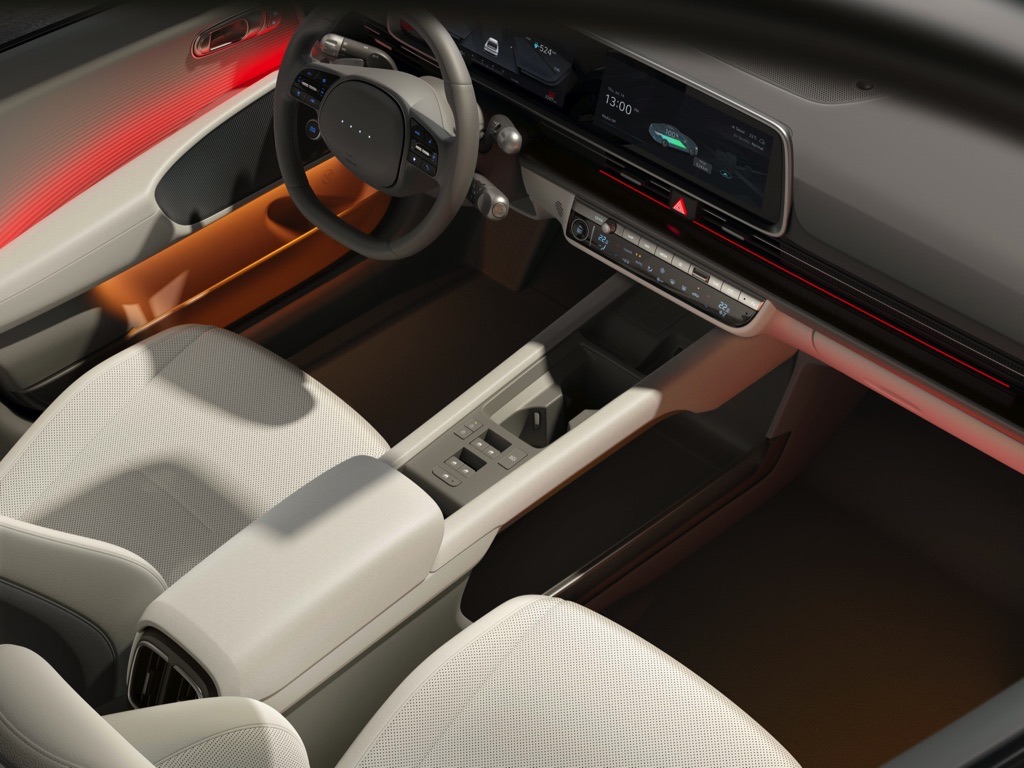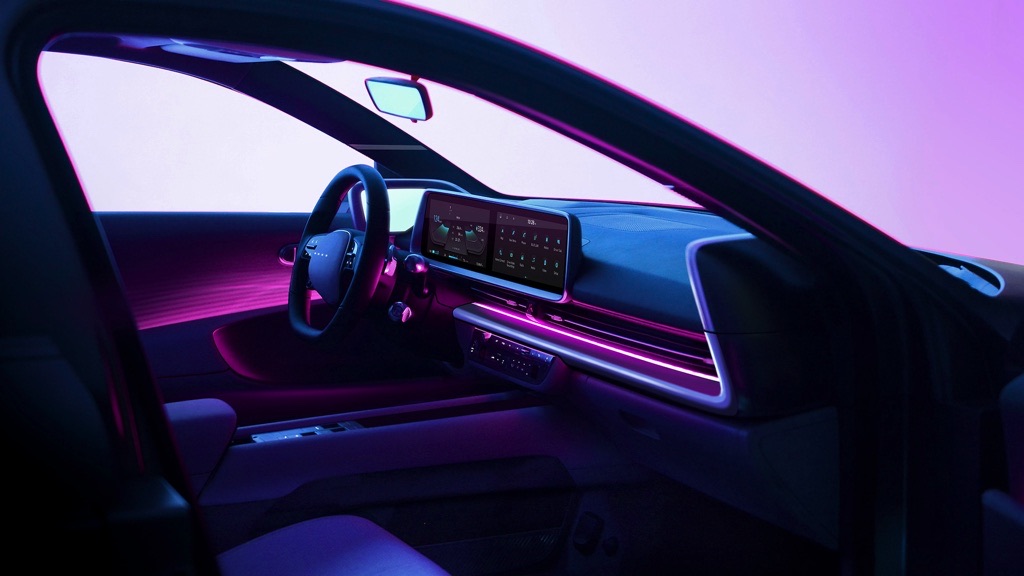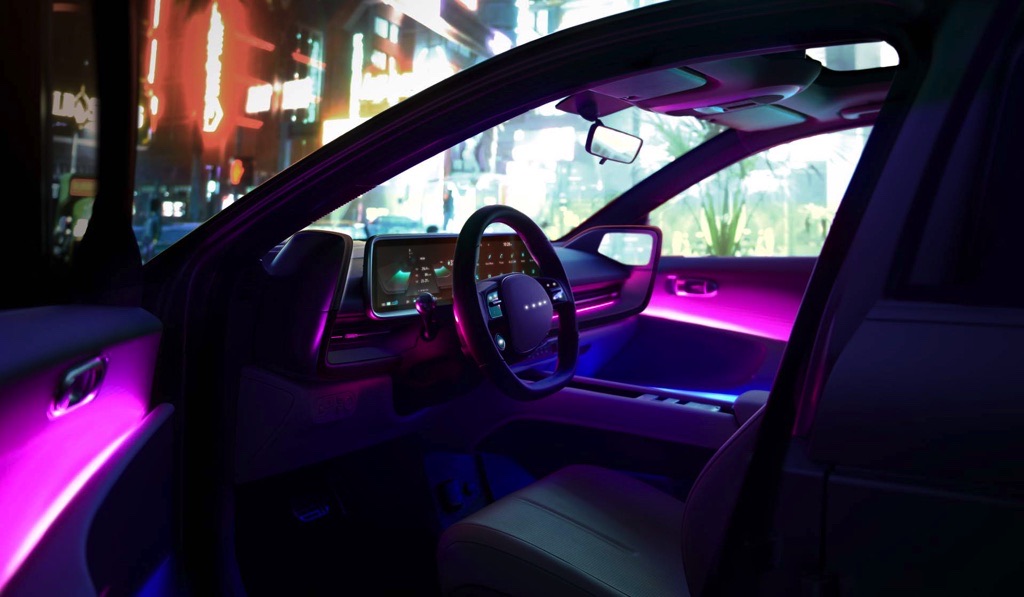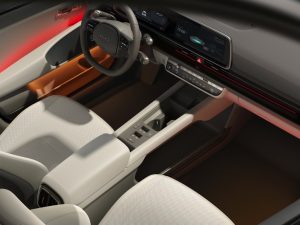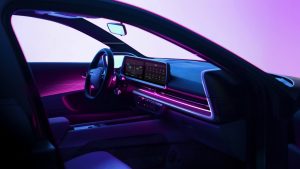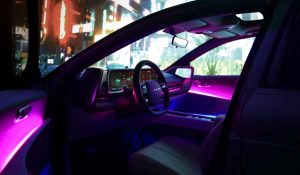Hyundai IONIQ 6 Long Range AWD
he Hyundai IONIQ 6 Long Range AWD is an upcoming electric vehicle from the South Korean automaker, Hyundai. It is part of the IONIQ electric vehicle lineup, which also includes the IONIQ 5 and IONIQ 7.
The IONIQ 6 Long Range AWD is expected to have a range of around 300 miles on a single charge, thanks to its large battery pack. It will also come with all-wheel drive, providing better traction and handling in various driving conditions.
In terms of design, the IONIQ 6 is expected to have a sporty and sleek appearance, with a low and wide stance. It will likely feature a large touchscreen display in the center console, along with advanced driver assistance features such as adaptive cruise control and lane keeping assist.
The IONIQ 6 Long Range AWD is expected to go on sale in 2022, although exact pricing and availability details have not yet been announced by Hyundai.
| Performance | |
| Acceleration 0 – 100 km/h | 5.1 sec |
| Top Speed | 190 km/h |
| Electric Range | 465 km |
| Total Power | 239 kW (325 PS) |
| Total Torque | 605 Nm |
| Drive | AWD |
| Battery and Charging | |
| Battery Capacity | 77.4 kWh |
| Battery Useable | 74.0 kWh |
| Europe | |
| Charge Port | Type 2 |
| Port Location | Right Side – Rear |
| Charge Power | 11 kW AC |
| Charge Time (0->465 km) | 8 hours |
| Charge Speed | 59 km/h |
| Fast charge Port | CCS |
| FC Port Location | Right Side – Rear |
| Fast charge Power (max) | 233 kW DC |
| Fast charge Time (47->372 km) | 16 min |
| Fast-charge Speed | 1220 km/h |
| Energy Consumption | |
| EVDB Real Range | |
| Range | 465 km |
| Vehicle Consumption | 159 Wh/km |
| CO2 Emissions | 0 g/km |
| Vehicle Fuel Equivalent | 1.8 l/100km |
|
Rated = official figures as published by the manufacturer. Rated consumption and fuel equivalency figures include charging losses.
|
|
|
Vehicle = calculated battery energy consumption used by the vehicle for propulsion and onboard systems.
|
|
| Real Energy Consumption Estimation between 112 – 221 Wh/km | |
| City – Cold Weather | 170 Wh/km |
| Highway – Cold Weather | 221 Wh/km |
| Combined – Cold Weather | 192 Wh/km |
| City – Mild Weather | 112 Wh/km |
| Highway – Mild Weather | 168 Wh/km |
| Combined – Mild Weather | 137 Wh/km |
|
Energy use for each trip will vary considerably depending on the driver and the conditions. Therefore, we have provided a range of estimates which can be useful in developing an understanding of the potential benefits of this technology.
|
|
| Dimensions and Weight | |
| Length | 4855 mm |
| Width | 1880 mm |
| Width with mirrors | No Data |
| Height | 1495 mm |
| Wheelbase | 2950 mm |
| Weight Unladen (EU) | 2100 kg |
| Gross Vehicle Weight (GVWR) | No Data |
| Max. Payload | No Data |
| Cargo Volume | No Data |
| Cargo Volume Max | No Data |
| Cargo Volume Frunk | No Data |
| Roof Load | No Data |
| Tow Hitch Possible | No Data |
| Towing Weight Unbraked | No Data |
| Towing Weight Braked | No Data |
| Vertical Load Max | No Data |
| Miscellaneous | |
| Seats | 5 people |
| Isofix | No Data |
| Turning Circle | No Data |
| Platform | HMG E-GMP |
| Car Body | Sedan |
| Segment | D – Large |
| Roof Rails | No Data |
| EV Dedicated Platform | Yes |
Home and Destination Charging (0 -> 100%)
A public charging station is required to use the highest possible charging rate. The EVSE/charging station’s charging capacity affects how long it takes to fully charge the battery. The table below shows all possible options for fully charging the Hyundai IONIQ 6 Long Range AWD.
In Europe, plugging an electric car into an outlet is often as easy as plugging it into a household outlet, but there are differences from country to country. The table below shows the different ways to charge the Hyundai IONIQ 6 Long Range AWD, but in some countries, some chargers may not be available.
| Charging Point | Max. Power | Power | Time | Rate |
| Wall Plug (2.3 kW) | 230V / 1x10A | 2.3 kW | 38 hours | 12 km/h |
| 1-phase 16A (3.7 kW) | 230V / 1x16A | 3.7 kW | 23h45m | 20 km/h |
| 1-phase 32A (7.4 kW) | 230V / 1x32A | 7.4 kW | 11h45m | 40 km/h |
| 3-phase 16A (11 kW) | 400V / 3x16A | 11 kW | 8 hours | 58 km/h |
| 3-phase 32A (22 kW) | 400V / 3x16A | 11 kW | 8 hours | 58 km/h |
Fast Charging (10 -> 80%)
If you want to enjoy driving an electric car, one of the most important features to consider is the number of miles per hour the car can travel while charged. This is called the “range” of the car. All electric cars have a certain range, even if they are 100% charged. This is because they do not have an internal combustion engine to lean on if you need to drive a long distance.
Max. Power: The maximum power provided by the charging point
Avg. Power: The average power provided by the charging point during a session of 10% to 80%.
Time: the time it takes to charge from 10% to 80%
Speed: the average charging rate during the session of 10% to 80%
Combined Charging System (CCS Combo 2)
| Charging Point | Max. Power | Avg. Power | Time | Rate |
| CCS (50 kW DC) | 50 kW | 50 kW | 65 min | 300 km/h |
| CCS (100 kW DC) | 100 kW | 95 kW | 34 min | 570 km/h |
| CCS (150 kW DC) | 150 kW | 135 kW | 24 min | 810 km/h |
| CCS (175 kW DC) | 175 kW | 155 kW | 21 min | 930 km/h |
| CCS (350 kW DC) | 233 kW | 200 kW | 16 min | 1220 km/h |
.
In Europe, plugging an electric car into an outlet is often as easy as plugging it into a household outlet, but there are differences from country to country. The table below shows the different ways to charge the Hyundai IONIQ 6 Long Range AWD, but in some countries, some chargers may not be available.
Type 2 (Mennekes – IEC 62196)

| Brand | Hyundai |
| Model | IONIQ 6 Long Range AWD |
| Body Style | Sedan |
| Car Engine | electric |
| Motor power | 239 |
| Maximum Torque, Nm | 605 |
| Battery Energy, kWh | 77.4 |
| Power reserve (NEDC/EPA/WLTP), km | - / - / 465 |
| Level Charging (230/400/DC), hours | 11.45 / 8.0 / 0.16 |
| Electrical Acceleration, 0-100 km/h (0-62.1 mph) in sec | 5.1 |
| Top Speed, km/h | 190 |
